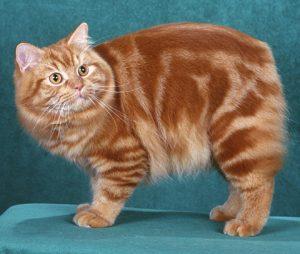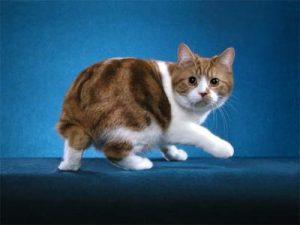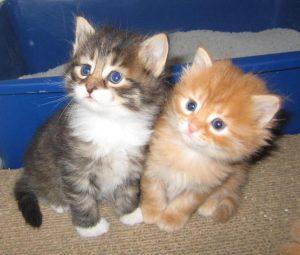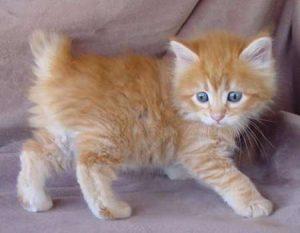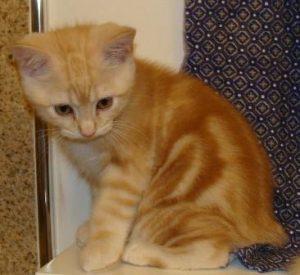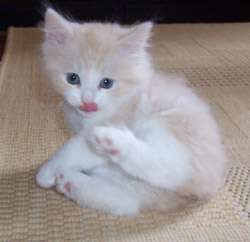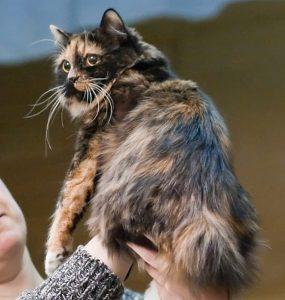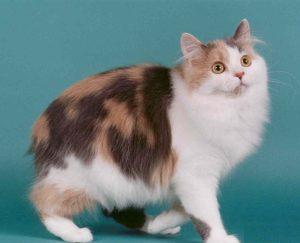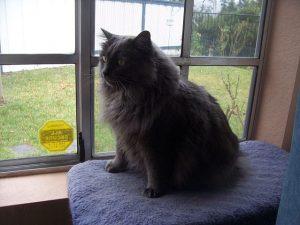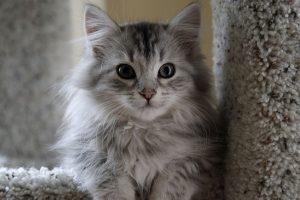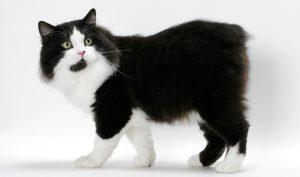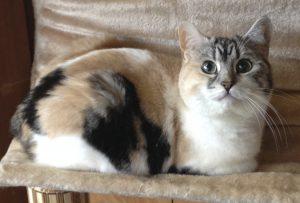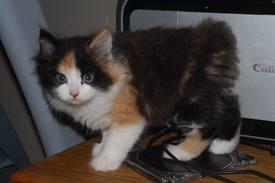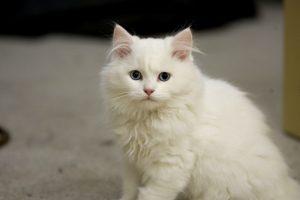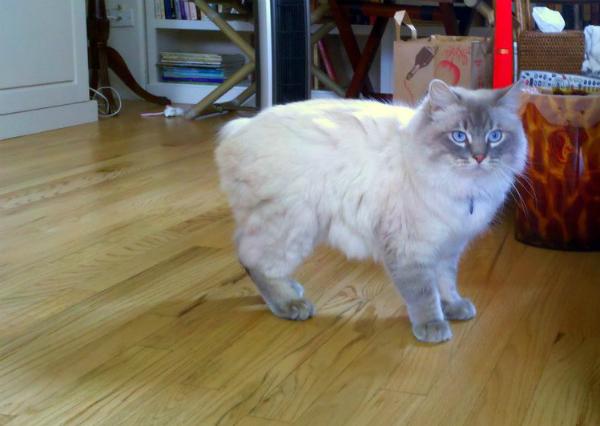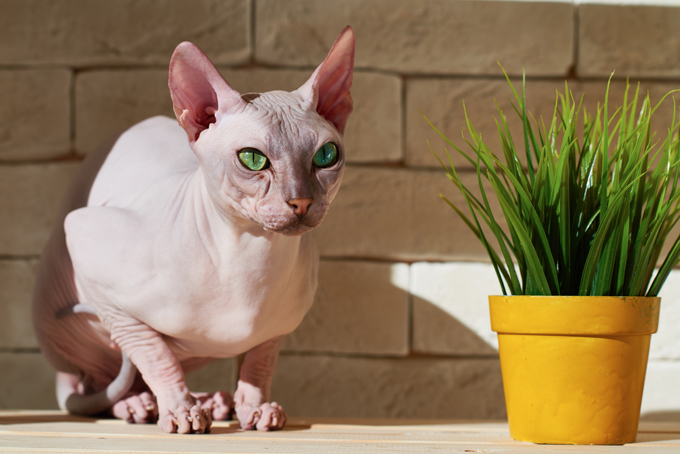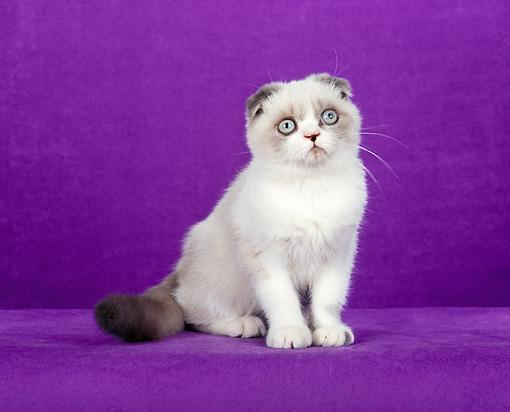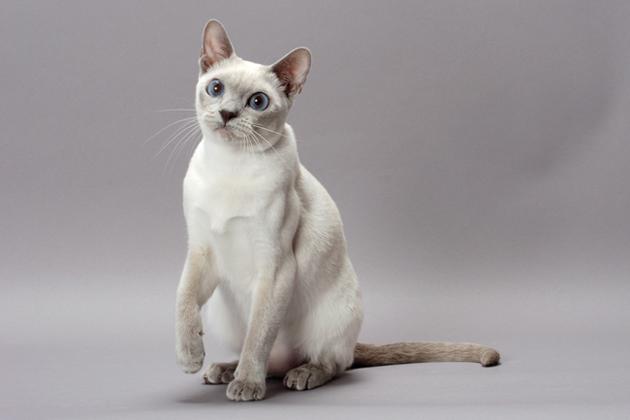Cymric Cat
The anurous, long-haired domesticated cat Cymric (pronounced ‘kim-rik’) has been considered by many cat fanciers and cat clubs as nothing but a variation of the Manx cat. In fact, its taillessness is something that the cat fanciers admire about. Although, some registries believe that this feline is simply a semi-long-haired variation of the ‘Manx’ breed.
With little or no difference from the Manx except for the length of the hair, the most remarkable thing is that, the kittens of both the types can appear in one and the same litter. These tailless cats have a heavy, muscular structure with a round head studded with almond-like eyes. They are covered with a dense, velvety coat all over and are found in varying colors and combinations.
Quick Description
Physical Appearance & Size
| Weight: | 9-13 pounds |
| Litter Size: | 2-4 kittens |
Colors & Patterns
| Coat Type: | Long, short, silky, dense, heavy |
| Coat Colors: | Tan, black, white, brown, lavender, chocolate, calico and combinations |
Other Characteristics
| Also Known as: | Manx Longhair, Longhair Manx, Semi-longhair Manx Variant, Long-haired Manx |
| Life Expectancy (Lifespan): | 9-15 years |
| Lap Cat: | Yes |
| Personality Traits: | Gentle, loyal, intelligent, playful |
| Shedding: | Constant |
| Good with Children: | Yes |
| Hypoallergenic: | Yes |
| Vocalization: | Moderate |
| Country of Origin: | UK (Ireland and Isle of Man, Great Britain) |
| Competitive Registration/Qualification Information: | CFA, FIFe, TICA, WCF, AACE, ACF, ACFA/CAA, CCA-AFC, CCC of A, CFF, GCCF, LOOF, NZCF, SACC |
History
The Cymric Cat was developed with the intention of creating a tailless cat. However, it has also been propounded that, the taillessness of these cats is result of a genetic mutation; a mutation that was further heightened by inbreeding in the Isle of Man in Great Britain for centuries, where these cats are indigenous. Thus, the dominant gene that decided the cat to be tailless passed on through generations, along with the longhair-gene.
Later, in the 1960s, similar tailless kittens were born in Canada, though they were intentionally bred. The Manx cat was recognized in the 1920s, but its sister breed Cymric started to show only in the 1960s. Finally, it was around the mid-1970s that these cats started gaining popularity.
The ‘Isle of Man Longhair’
The ‘Isle of Man Longhair’ is only a genetic variant of the cymric, with no differences with the latter, except that, it is tailed. Some registries have designated them as breeding stocks in the names ‘Tailed Cymric’ and ‘Tailed Manx Longhair’. These cats hold an important place in breeding the cymric and the manx cats, because, if two tailless cymrics or manx are bred, the offspring are born with birth defects.
Temperament and Personality
The intelligent cymric understands how to implement its virtue of friendliness by bonding well with its family members and other fellow pets. Unlike many other breeds, they wouldn’t bother their owners demanding much attention, but would spend some quality time instead.
Cymrics are generally even-tempered – a feline with an affectionate disposition, fond of tranquil surroundings. These cats love water, but do not enjoy bathing in it. They are moderately active, but are great jumpers, and would cherish the moments playing with their owners. They would love to follow their family members all day, extending their helping ‘hands’, as they can, trying to converse with them, if given a chance. They certainly love to curl on the laps of their loved ones, but when their laps are not available, they would repose at the nearest place from where they can keep an eye on them.
These cats were mostly developed as hunters, mostly as mouse-catchers. This very old instinct has retained their hunting skills. They often act like watchdogs. Though they are mostly quiet, but would alarm their owners, and might even growl threateningly at the very sight of anything ‘uncanny’.
Care
The long hairs of the cymric needs sustentative grooming for an overall good health. You should brush their hair at least twice to thrice every week. This would remove the dead hairs and prohibit formation of mats. But they need extra care during their shedding seasons of spring and fall.
Trim their nails weekly as also clean their ears occasionally. In order to maintain a sound dental hygiene and fresh breath, brushing their teeth a couple of times every week is also a necessity.
The genetic mutation (referred to as ‘Sacrocaudal dysgenesis’) that has made the cymric tailless, is also responsible for causing ‘spina bifida’ (an in-born defect of fused vertebrae, where the backbone and the membranes around the spinal cord suffer an incomplete closing) in humans. 20% of the cymric cats are affected by this condition, and is commonly known as the ‘Manx syndrome ‘. This might either appear during birth, or within six months of age, and can prove to be fatal.
These cats are also vulnerable to such frequent neurological abnormalities like ‘sacrocaudal dysgenesis’, etc. Gastrointestinal disorders like ‘megacolon’ and ‘rectal prolapsed’ are also not uncommon to these felines. They are also prone to developing a progressive eye condition called ‘corneal dystrophy’ typically at about four months of age. Keeping all these issues in mind, it is advisable to go for a routine checkup with your veterinarian.Training
A proper, sound training since childhood would certainly make them more adaptable to anything new – new people, new pets, new home or family. Because these cats are not much active, teach your cymric kitten how to mingle with people and pets, and you would be surprised to see them being friendly enough to rub their heads, butts or cheeks against them.
If you would train them, they would quickly learn picking up tricks like fetching, riding cars, opening doors, walking on leash, value your wishes, and the like. However, do give them a caring alternative to thanking them for being good and for their nice behavior.
Diet/Feeding
A general cat diet is good enough for your cymric. However, do not offer them such foods that are commonly not recommended for cats.
Interesting Facts
- The word ‘cymric’ has derived from an old language spoken by people in Wales, which is also known as ‘Cymric’.
- In the breed standard, colors chocolate and lavender, and the pointed Himalayan patterns are not permitted.
- A Biblical legend says that, the Cymric was sleepy and groggy, when Noah was closing the door of his ark, and it lost its tail as the tail got stuck in the hinges, and the door slammed on it.
- Frequentnly, the kittens in the cymrics’ litters are stillborn.
- Astrologically, the zodiac sign of the cymric cat is ‘Aries’.

